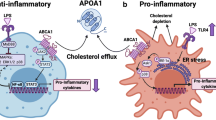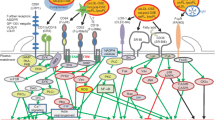Abstract
Apolipoprotein A-I (apo A-I) an indispensable component and a major structural protein of high-density lipoprotein (HDL), plays a vital role in reverse cholesterol transport and cellular cholesterol homeostasis since its identification. Its multifunctional role in immunity, inflammation, apoptosis, viral, bacterial infection etc. has crossed its boundary of its potential of protecting cardiovascular system and lowering cardiovascular disease risk, attributing HDL to be known as a protective fat removal particle. Its structural homology with prostacyclin stabilization factor has contributed to its anti-clotting and anti-aggregatory effect on platelet which has potentiated its cardio-protective role as well as its therapeutic efficacy against Alzheimer’s disease. The binding affinity and neutralising action against endotoxin lipopolysaccharide, reduces the toxic manifestations of septic shock. As a negative acute phase protein, it blocks T-cell signalling of macrophages. However the recently identified anti-tumor activity of apo A-I has been highlighted in various models of melanoma, lung cancer, ovarian cancer, lymphoblastic leukaemia, gastric as well as pancreatic cancers. These cancer fighting effects are directed towards regression of tumor size and distant metastasis by its immuno modulatory activity as well as its clearing effect on serum lysophospholipids. This lowering effect on lysophospholipid concentration is utilized by apo A-I mimetic peptides to be used in retarding tumor cell proliferation and as a potential cancer therapeutic agent. Not only that, it inhibits the tumor associated neo-angiogenesis as well as brings down the matrix degrading enzymes associated with tumor metastasis. However this efficient therapeutic potential of apo A-I as an anti tumor agent awaits further future experimental studies in humans.




Similar content being viewed by others
References
Wasan KM, Brocks DR, Lee SD, Sachs-Barrable K, Thornton SJ. Impact of lipoproteins on the biological activity and disposition of hydrophobic drugs: implications for drug discovery. Nat Rev Drug Discov. 2008;7(1):84–99.
Phillips JC, Wrigglers W, Li Z, Schulten K. Predicting the structure of apolipoprotein AI in reconstituted high density lipoprotein disks. Biophys J. 1997;73:2337–46.
Yui Y, Aoyama T, Morishita H, Takahashi M, Takatsu Y, Kawai C. Serum prostacyclin stabilizing factor is identical to apolipoprotein A-I (apo A-I). A novel function of apo A-I. J Clin Invest. 1988;82(3):803–7.
Oda MN, Budamagunta MS, Borja MS, Petrlova J, Voss JC, Lagerstedt JO. The secondary structure of Apolipoprotein A-1 on 9.6 nm reconstituted high density lipoprotein determined by EPR Spectroscopy. FEBS J. 2013;280(14):3416–24.
Cuellar LÁ, Prieto ED, Cabaleiro LV, Garda HA. Apolipoprotein A-I configuration and cell cholesterol efflux activity of discoidal lipoproteins depend on the reconstitution process. Biochim Biophys Acta. 2014;1841(1):180–9.
Frank PG, Marcel YL. Apolipoprotein A-I: structure-function relationships. J Lipid Res. 2000;41(6):853–72.
Adachi E, Kosaka A, Tsuji K, Mizuguchi C, Kawashima H, Shigenaga A, et al. The extreme N-terminal region of human apolipoprotein A-I has a strong propensity to form amyloid fibrils. FEBS Lett. 2014;588(3):389–94.
Arinami T, Hirano T, Kobayashi K, Yamanouchi Y, Hamaguchi H. Assignment of the apolipoprotein A-I gene to 11q23 based on RFLP in a case with a partial deletion of chromosome 11, del(11)(q23.3→qter). Hum Genet. 1990;85(1):39–40.
Tall AR, Wang N. Tangier disease as a test of reverse cholesterol transport hypothesis. J Clin Invest. 2000;106(10):1205–7.
Franceschini G, Sirtori M, Gianfranceschi G, Sirtori CR. Relation between the HDL apoproteins and A-I isoproteins in subjects with the AIMilano abnormality. Metab Clin Exp. 1981;30(5):502–9.
Dastani Z, Dangoisse C, Boucher B, Desbiens K, Krimbou L, Dufour R, et al. A novel nonsense apolipoprotein A-I mutation (apoA-I(E136X)) causes low HDL cholesterol in French Canadians. Atherosclerosis. 2006;185(1):127–36.
Huang Y, DiDonato JA, Levison BS, Schmitt D, Li L, Wu Y, et al. An abundant dysfunctional apolipoprotein A1 in human atheroma. Nat Med. 2014;20(2):193–203.
Mossuz P, Bouamrani A, Brugière S, Arlotto M, Hermouet S, Lippert E, et al. Apolipoprotein A1: a new serum marker correlated to JAK2 V617F proportion at diagnosis in patients with polycythemia vera. Proteomics Clin Appl. 2007;1(12):1605–12.
Koldamova RP, Lefterov IM, Lefterova MI, Lazo JS. Apolipoprotein AI directly interacts with amyloid precursor protein and inhibits A beta aggregation and toxicity. Biochemistry. 2001;40(12):3553–60.
Zamanian-Daryoush M, Lindner D, Tallant TC, Wang Z, Buffa J, Klipfell E, et al. The cardioprotective protein apolipoprotein A I promotes potent anti-tumorigenic effects. J Biol Chem. 2013;288(29):21237–52.
Rye KA, Bursill CA, Lambert G, Tabet F, Barter PJ. The metabolism and anti-atherogenic properties of HDL. J Lipid Res. 2009;50(Suppl):S195–200.
Camont L, Chapman MJ, Kontush A. Biological activities of HDL subpopulations and their relevance to cardiovascular disease. Trends Mol Med. 2011;17:594–603.
Gordon SM, Hofmann S, Askew DS, Davidson WS. High density lipoprotein:it’s not just about lipid transport anymore. Trends Endocrinol Metab. 2011;22:9–15.
Vanhamme L, Paturiaux-Hanocq F, Poelvoorde P, Nolan DP, Lins L, Van Den Abbeele J, et al. Apolipoprotein L-I is the trypanosome lytic factor of human serum. Nature. 2003;422:83–7.
Levine DM, Parker TS, Donnelly TM, Walsh A, Rubin AL. In vivo protection against endotoxin by plasma high density lipoprotein. Proc Natl Acad Sci USA. 1993;90:12040–4.
Grunfeld C, Marshall M, Shisenega JK, Moser AH, Tobias P, Feingold KR. Lipoproteins inhibit macrophage activation by lipoteichoic acid. J Lipid Res. 1999;40:245–54.
Ma J, Liao XL, Lou B, Wu MP. Role of apolipoprotein A-I in protecting against endotoxin toxicity. ActaBiochim Biophys Sin (Shanghai). 2004;36(6):419–24.
Gordon SM, Hofmann S, Askew DS, Davidson WS. High density lipoprotein: it’s not just about lipid transport anymore. Trends Endocrinol Metab. 2011;22(1):9–15.
Singh IP, Chopra AK, Coppenhaver DH, Ananatharamaiah GM, Baron S. Lipoproteins account for part of the broad non-specific antiviral activity of human serum. Antiviral Res. 1999;42(3):211–8.
Srinivas RV, Birkedal B, Owens RJ, Ananatharamaiah GM, Segrest JP, Compans RW. Antiviral effects of Apolipoprotein AI and its synthetic amphipathic peptide analogs. Virology. 1990;176(1):48.
Wilhelm AJ, Zabalawi M, Owen JS, Shah D, Grayson JM, Major AS, et al. Apo lipoprotein A1 Modulates regulatory T cells in auto immune LDL r-/-, Apo A 1-/- mice. J Biol Chem. 2010;285(46):16158.
Catapano AL, Pirillo A, Bonacina F, Norata GD. HDL in innate and adaptive immunity. Cardiovasc Res. 2014;103(3):372–83. doi:10.1093/cvr/cvu150.
Hyka N, Dayer JM, Modoux C, Kohno T, Edwards CK III, Roux-Lombard P, et al. Apolipoprotein A-I inhibits the production of interleukin-1beta and tumor necrosis factor-alpha by blocking contact-mediated activation of monocytes by T lymphocytes. Blood. 2001;97:2381–9.
Feldmann M, Taylor P, Paleolog E, Brennan FM, Maini RN. Anti-TNF alpha therapy is useful in rheumatoid arthritis and Crohn’s disease: analysis of the mechanism of action predicts utility in other diseases. Transpl Proc. 1998;30:4126–7.
Maini R, St Clair EW, Breedveld F, Furst D, Kalden J, Weisman M, ATTRACT Study Group, et al. Infliximab(chimeric anti-tumour necrosis factor alpha monoclonal antibody) versus placebo in rheumatoid arthritis patients receiving concomitant methotrexate: a randomised phase III trial. Lancet. 1999;354(9194):1932–9.
Kalden JR, Breedveld FC, Burkhardt H, Burmester GR. Immunological treatment of autoimmune diseases. Adv Immunol. 1998;68:333–418.
Tangirala RK, Tsukamoto K, Chun SH, Usher D, Pure E, Rader DJ. Regression of atherosclerosis induced by liver-directed gene transfer of apolipoproteinA-I in mice. Circulation. 1999;100:1816–22.
Paszty C, Maeda N, Verstuyft J, Rubin EM. Apolipoprotein AI transgene corrects apolipoprotein E deficiency-induced atherosclerosis in mice. J Clin Invest. 1994;94:899–903.
Vergnes L, Baroukh N, Ostos MA, Castro G, Duverger N, Nanjee MN, et al. Expression of human apolipoprotein A-I/C-III/A-IV gene cluster in mice induces hyperlipidemia but reduces atherogenesis. Arterioscler Thromb Vasc Biol. 2000;20:2266–74.
Neale, T.: HDL component an enemy to cancer in mice. http://www.medpagetoday.com/Cardiology/Dyslipidemia/40579 (2013). Accessed 22 July 2013.
Ehmann M, Felix K, Hartmann D, Schnölzer M, Nees M, Vorderwülbecke S, et al. Identification of potential markers for the detection of pancreatic cancer through comparative serum protein expression profiling. Pancreas. 2007;34:205–14.
Chong P-K, Lee H, Zhou J, Liu S-C, Loh MCS, So JBY, et al. Reduced plasma APOA1 level is associated with Gastric Tumor Growth in MKN45 mouse xenograft mode. J Proteomics. 2010;73(8):1632–40.
Kozak KR, Su F, Whitelegge JP, Faull K, Reddy S, Farias-Eisner R. Characterization of serum biomarkers for detection of early stage ovarian cancer. Proteomics. 2005;5:4589–96.
Halton JM, Nazir DJ, McQueen MJ, Barr RD. Blood lipid profiles in children with acute lymphoblastic leukemia. Cancer. 1998;83:379–84.
Scribano D, Baroni S, Pagano L, Zuppi C, Lione G, Giardina B, et al. Return to normal values of lipid pattern after effective chemotherapy in acute lymphoblastic leukemia. Haematologica. 1996;81:343–5.
Li H, Wang D, Zhang H, Kirmani K, Zhao Z, Steinmetz R, et al. Lysophosphatidic acid stimulates cell migration, invasion, and colony formation as well as tumorigenesis/metastasis of mouse ovarian cancer in immunocompetent mice. Mol Cancer Ther. 2009;8:1692–701.
Su F, Kozak KR, Imaizumi S, Gao F, Amneus MW, Grijalva V, et al. Apolipoprotein A-I (apoA-I) and apoA-I mimetic peptides inhibit tumor development in a mouse model of ovarian cancer. Proc Natl Acad Sci USA. 2010;107:19997–20002.
Neyen C, Pluddemann A, Mukhopadhyay S, Maniati E, Bossard M, Gordon S, et al. Macrophage scavenger receptor a promotes tumor progression in murine models of ovarian and pancreatic cancer. J Immunol. 2013;190:000–000.
Neyen C, Mukhopadhyay S, Gordon S, Hagemann T. An apolipoprotein A-I mimetic targets scavenger receptor A on tumor-associated macrophages A prospective anticancer treatment. Oncoimmunology. 2013;2(6):e24461. doi:10.4161/onci.24461.
Hofmann UB, Houben R, Bröcker EB, Becker JC. Role of matrix metalloproteinases in melanoma cell invasion. Biochimie. 2005;87:307–14.
Condamine T, Gabrilovich DI. Molecular mechanisms regulating myeloid-derived suppressor cell differentiation and function. Trends Immunol. 2011;32:19–25.
Piras F, Murtas D, Minerba L, Ugalde J, Floris C, Maxia C, et al. Nuclear survivin is associated with disease recurrence and poor survival in patients with cutaneous malignant melanoma. Histopathology. 2007;50:835–42.
Cockerill GW, Rye KA, Gamble JR, Vadas MA, Barter PJ, et al. High-density lipoproteins inhibit cytokine-induced expression of endothelial cell adhesion molecules. Arterioscler Thromb Vasc Biol. 1995;15:1987–94.
Nissen SE, Tsunoda T, Tuzcu EM, Schoenhagen P, Cooper CJ, Yasin M, et al. Effect of recombinant ApoA-I Milano on coronary atherosclerosis in patients with acute coronary syndromes: a randomized controlled trial. JAMA. 2003;290:2292–300.
Tardif JC, Gregoire J, L’Allier PL, Ibrahim R, Lesperance J, Heinonen TM, et al. Effects of reconstituted high-density lipoprotein infusions on coronary atherosclerosis: a randomized controlled trial. JAMA. 2007;297:1675–82.
Sacks FM, Rudel LL, Conner A, Akeefe H, Kostner G, Baki T, et al. Selective delipidation of plasma HDL enhances reverse cholesterol transport in vivo. J Lipid Res. 2009;50:894–907.
Author information
Authors and Affiliations
Corresponding author
Rights and permissions
About this article
Cite this article
Mangaraj, M., Nanda, R. & Panda, S. Apolipoprotein A-I: A Molecule of Diverse Function. Ind J Clin Biochem 31, 253–259 (2016). https://doi.org/10.1007/s12291-015-0513-1
Received:
Accepted:
Published:
Issue Date:
DOI: https://doi.org/10.1007/s12291-015-0513-1




